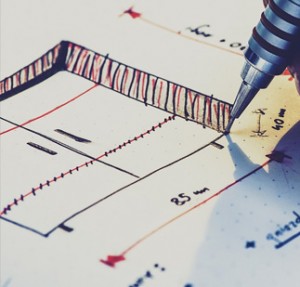The Importance of Engineering and Dimensions in Conveyor Pulleys
December 2nd, 2015 A smoothly operating conveyor system is a thing of engineered beauty. Take away this fluid movement and you risk ending this harmonious arrangement. The chain of energy transmission becomes unstable. Uneven wear patterns develop. The conveyor pulleys suffer. Performance is compromised, and this distressing scene undermines the reliability of the equipment. Balance is lost, to be sure, but this is no abstract notion. The lost balance referenced in this case touches upon energy losses and stunted operation cycles. The machinery is subject to greater breakdown incidents, and the period between maintenance inspections shrinks, resulting in greater down time and lost productivity.
A smoothly operating conveyor system is a thing of engineered beauty. Take away this fluid movement and you risk ending this harmonious arrangement. The chain of energy transmission becomes unstable. Uneven wear patterns develop. The conveyor pulleys suffer. Performance is compromised, and this distressing scene undermines the reliability of the equipment. Balance is lost, to be sure, but this is no abstract notion. The lost balance referenced in this case touches upon energy losses and stunted operation cycles. The machinery is subject to greater breakdown incidents, and the period between maintenance inspections shrinks, resulting in greater down time and lost productivity.
Incorporating Parallelism and a Concentric Operational Profile
In order to match radial movement across all conveyor pulleys, the components are manufactured to exacting dimensional standards. The rollers and shafts, housings and drums may look huge, but scale is no excuse for shoddy geometrical exactitude. The shafts are therefore aligned properly to avoid shearing effects, a phenomenon that’s not always observable over the course of a few days or weeks, but it’s one that will eventually be picked up and documented by the maintenance team when expensive abrasive affects pop up along the belt. Next, the drum and shaft represent the second axis under consideration. The 90 degree twist in thinking takes our perspective across to the drums and the lagged surfaces, for it’s at this point that full mechanical contact takes place between the belt and the drum. It’s therefore essential that the parts are level and free of the peaks and troughs that would otherwise transform a formerly level belt into a rippling mess.
Bearing and Housing Misalignments
High-end conveyor systems depend on the belt and drum arrangement, on conveyor pulleys that deliver when it comes to pure engineering characteristics, but it’s down into the smaller realms, into the bearings and housings that support those bearings that trouble often takes root. If even one end of the pulley is fractionally out of alignment, skewed to one side or another, then the twin races of the bearings are bound to be subjected to off balance forces. The small balls face additional stress, and this mechanical pressure will offset the superior friction-cancelling attributes of even the best bearing.
Engineering exactitude and dimensional uniformity may not seem important when talking of larger-than-life equipment, but even a single degree of misalignment can spell disaster over time. The equipment is straining to work efficiently but is doing so while off balance. Thankfully, there are tests to evaluate the uniformity of the system, and some adjustments are made possible by opening the bearing housings. Meanwhile, as far as dimensions go, the best answer is to choose a manufacturer who has a reputation for building high-quality system components, parts that are quality assured to meet refined system specifications.
CONVEYOR PULLEYS RUBBERFIX PTY LTD
6A Kempson Court, Keysborough,
VIC Australia, 3173
6A Kempson Court, Keysborough,
VIC Australia, 3173
Phone: + 61 3 9769 0777
Fax: + 61 3 9706 3834
VoIP: + 61 3 8743 3167
Mob: 0402 307 817
Email: rubberfix@iinet.net.au
www.cprpulleys.com.au
Optimized by NetwizardSEO.com.au
